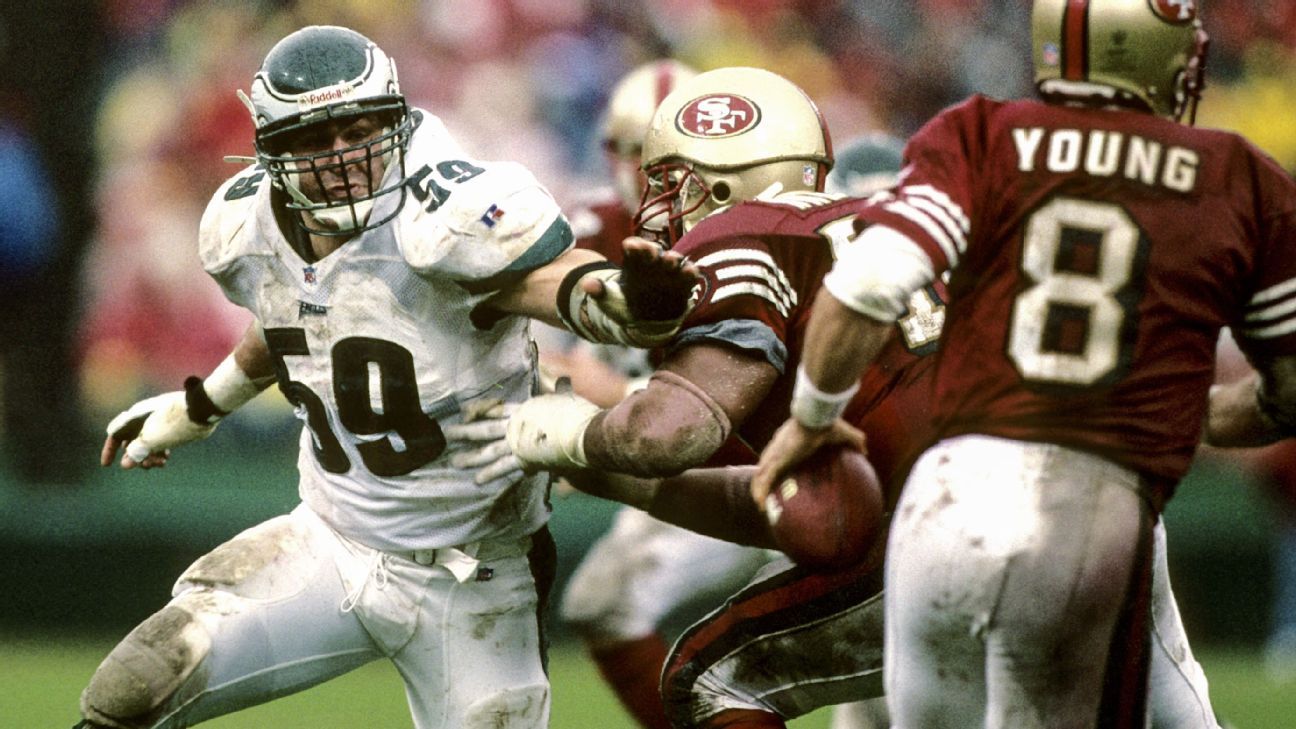How do you know they are starter material or not until they get into the system and start working with your guys? There have been hundreds of picks throughout the years that teams chose to be starters and they flamed out.
Aaron Curry
Owen Gill
Dan McGwire
Rick Mirer
Need more examples?
Sure. Although it's not the magic black box one might assume it is.
Aaron Curry was a much lauded 'NFL ready' pick. By some of the least astute analysts on the planet. Curry was a LB prospect who basically couldn't pass rush. Much (exactly even) in the same way there are still analysts pushing the likes of Jalen Carter today. Curry had some picks in college, which led some to think he was a good tackle/coverage guy. But looking at those picks and they were kind of 'fall in your lap' kind of plays. If one was to look more deeply at him -- it would have been apparent that he wasn't this coverage genius at all. He was a tackling machine though. The kind a team should draft in late R2+. Little ability to force impact plays on his own, although showed ability to make stops on and before the LOS. And his career was pretty much on point with what he showed in college.
Most fans, even most analysts, don't really look at any of these guys closely. Some do though. And of those, Curry was seen as a pretty significant reach and a fringe 1st round talent based on his ability to make plays at the LOS.
Owen Gill. Well I have nothing to say on him. I think I was like 10 when we drafted him. Back when all there was was only Lindy's Draft guide.
Dan McGwire was a dumb pick. Dumb because nobody on the team stumped for him except our owner. Just because he was picked in the first, doesn't mean he was a first round grade prospect. McGwire wasn't even a high ceiling kind of player in college. I'd also lump in the Kelly Stouffer trade in this regard. Stouffer was a genuinely uninspiring performer who really had no business in day 1 or 2 of the draft. His college results against WAC level competition was genuinely terrible.
Rick Mirer. Yeah, he was a complete miss. He had all the tools. Pedigree. Success at every level. I remember vividly cursing at the TV when Seattle beat New England during that lost season knowing we'd just cost us the ability to draft Bledsoe. That year was the first year I started really looking into the NFL draft. Although it's worth noting that even picking a bad top level QB has value even if he fails. His trade gave us the trade stock to move up in a bad 1997 draft for both Shawn Springs and Walter Jones.
The point is, the draft isn't a guarantee. But it's also not a complete mystery either. And while everyone is entitled to their own opinions on who is worthy -- not all opinions are informed or even backed up with any kind of insight at all. So for those that follow the draft superficially -- or those that think all opinions are equal, it can seem like a crap shoot. When it really isn't -- completely. There is naturally an element of luck/fortune involved. Certainly injury. But also that a player doesn't grow as is necessary when one reaches the NFL. That's kind of the secret sauce that can't be measured on draft day*.
I choose carefully the opinions/analysis I consume, and when I do, I make sure to watch the player closely to form my own opinions. When I read a fully unsupported opinion on a player, I basically disregard it immediately unless it's from a source I value highly. Helps to filter out the noise and also keep an open mind when I do look at players. I don't even watch highlight videos as they really don't give any context to what you are seeing. They tell me virtually nothing. Honestly I'd say most prospects I end up studying are usually a byproduct of studying a different player entirely from a different team.
* - This component is largely why traits and testing matters IMO. Players need to be capable of making plays, even when their experience wouldn't normally allow. Great athletes can get on the field and can mask the lack of experience with athletic talent. Which affords them the ability to gain NFL experience. Tariq Woolen is the latest prime example of that. He is genuinely inexperienced as a CB -- either by CFB or NFL standards. But his talent allows the team to play him despite making mistakes. Sometimes game losing ones.
When teams take a guy (like this year for example, Tyree Wilson), who has elite level traits -- you're kind of banking that his traits will allow him to tread water until the player garners experience AND grows into his position. There isn't much tape I see that tells me this guy is a game altering talent at DE. He shows flashes and some ability to counter. Can bend, so has tools. But also his production is very uninspiring for a guy with these traits. Kind of like Woolen who I loved heading into the draft. The difference of draft position can't be ignored however. He has the kind of risk that one would be comfortable with in the mid teens. Kind of reminds me of K'lavon Chaisson from 2020.

